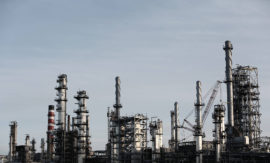Intended learning outcomes: Produce an overview on processes, technology, and resources. Present the process train: a processor-oriented production structure. Disclose lot control in inventory management.
In Section 1.2, the product structure, production structure, and process plan were each “attached” to a product. This conventional, assembly-oriented arrangement it is not suitable for the process industry. The process industry requires extended business objects that essentially reflect an order structure with various possible products. This section introduces some new business objects and extensions to objects already discussed. Detailed modeling of these business objects is discussed in Section 17.4.
Course section 8.2: Subsections and their intended learning outcomes

8.2 Processor-Oriented Master and Order Data Management
Intended learning outcomes: Produce an overview on processes, technology, and resources. Present the process train: a processor-oriented production structure. Disclose lot control in inventory management.

8.2.1 Processes, Technology, and Resources
Intended learning outcomes: Present processor-oriented master data and give examples of resources.

8.2.2 The Chocolate Production — An Example of a Processor-Oriented Production Structure
Intended learning outcomes: Describe the production structure in chocolate production. Explain the various manufacturing steps and stages in chocolate production.

8.2.2b The Process Train — A Formalized Processor-Oriented Production Structure, and The Recipe
Intended learning outcomes: Explain the formalized process train with stages and basic manufacturing steps. Identify the recipe.

8.2.3 Lot Control in Inventory Management
Intended learning outcomes: Describe the steps of lot control in inventory management. Identify the batch ID.
Course 8: Sections and their intended learning outcomes

Course 8 – The Concept for the Process Industry
Intended learning outcomes: Produce characteristics of the process industry. Disclose processor-oriented master and order data management. Explain in detail processor-oriented resource management. Describe special features of long-term planning.

8.1 Characteristics of the Process Industry
Intended learning outcomes: Explain divergent product structures and by-products. Describe high-volume line production, flow resources and inflexible facilities. Produce an overview on large batches, lot traceability, and loops in the order structure.

8.2 Processor-Oriented Master and Order Data Management
Intended learning outcomes: Produce an overview on processes, technology, and resources. Present the process train: a processor-oriented production structure. Disclose lot control in inventory management.

8.3 Processor-Oriented Resource Management
Intended learning outcomes: Explain campaign planning. Differentiate between processor-dominated Scheduling and material-dominated scheduling. Describe a nonlinear usage quantity and a product structure with loops.

8.4 Special Features of Long-Term Planning
Intended learning outcomes: Disclose the determination of the degree of detail of the master production schedule. Describe pipeline planning across several independent locations.

8.5 Summary
.

8.6 Keywords
.

8.7 Scenarios and Exercises
Intended learning outcomes: Differentiate between batch production and continuous production. Calculate an example of manufacture of by-products. Elaborate an example of production planning in process industries.

8.8 References
.
